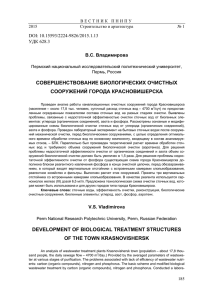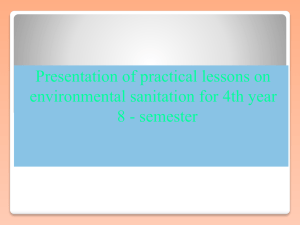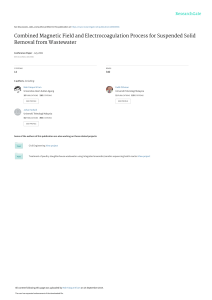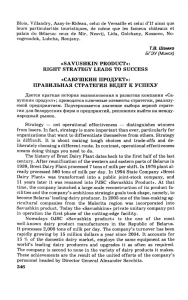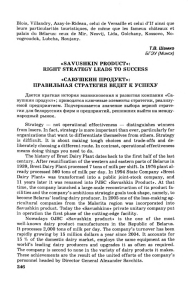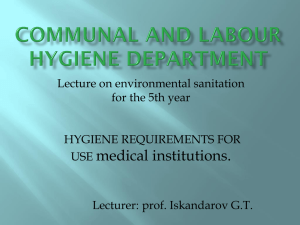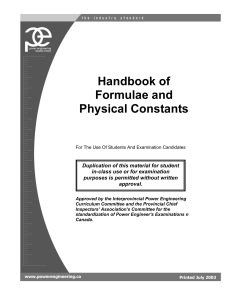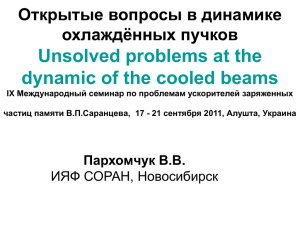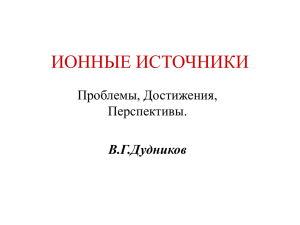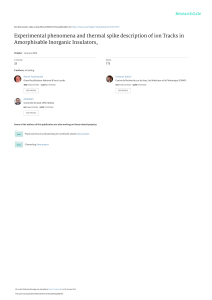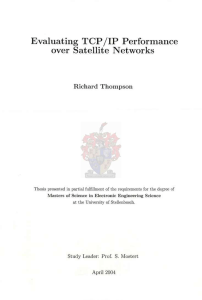Cleaning and disposal of industrial waste water environmental sanitation for 4th year
реклама
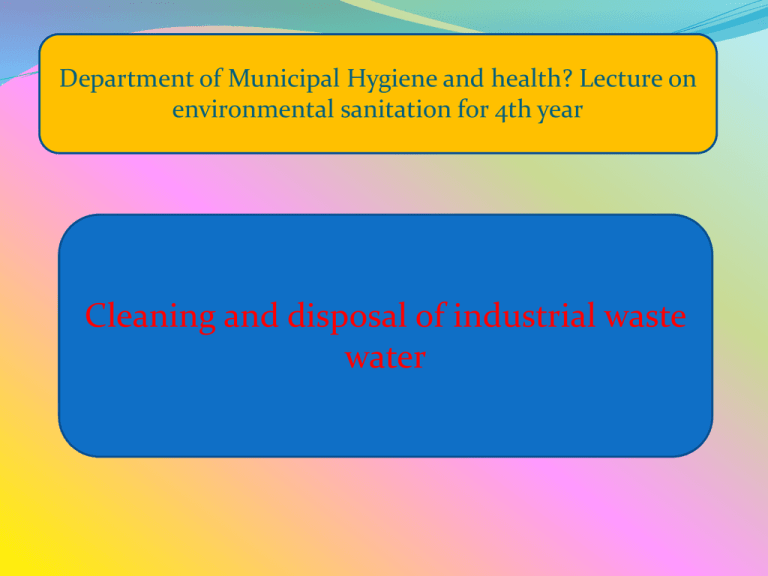
Department of Municipal Hygiene and health? Lecture on environmental sanitation for 4th year Cleaning and disposal of industrial waste water questions: 1. Problems of water pollution by sewage. 2. Methods of treatment of industrial wastewater. 3.Measure to reduce industrial water pollution. In recent years, water recycling in the industry amounted to an average of about 60%: In recent years, water recycling in the industry amounted to an average of about 60%: Himicheskaya- 77% Black Metallurgy 78% Non-ferrous metallurgy, 56% Meat and dairy -54% Meat and dairy -54% Industry stroymaterialov- 50%. When using urban wastewater in closed systems technical water supply is sufficient to ensure the safety of the epidemic, which is achieved by disinfection water and the appropriate rank of technical measures. When using wastewater in open systems, service water supply in addition to providing epidemiological. Safety evaluation includes criteria to guarantee the harmlessness for human chemical composition and favorable organoleptic properties Hygienic quality criteria treated municipal wastewater used in closed systems technical water supply. Sanitary wastewater quality criteria used in open systems, service water supply. Indicators Admissible levels chemical absorptivity of oxygen, mg 02/l 5,0 biological absorptivity of oxygen, mg 02/l 50,0 Coli- index 1000 Weighed substance mg/l 3,0 For cleaning waste water containing oil and oil products, used oil traps, which are conventional horizontal tanks. Defend oil collected header tubes, sediment should be removed periodically. For proper operation of the oil trap the oil content in the effluent is reduced to 50-100 mg / l. In most cases, after the oil traps requires wastewater treatment. Adsorption methods of wastewater treatment used to extract nickel from wastewater production of synthetic rubber, izopropilbenzola- from wastewater production of isopropylbenzene hydroperoxide, ortho and para-nitrophenol. Removing the disulfide of sewage plant and synthetic artificial fibers using activated carbon not only allows to remove completely carbon disulfide, but return to the production of carbon disulfide to 7.5 m per month. Ion exchange. Among physicochemical methods include the use of filters, operating on the principle of ion exchange. Ion exchange filters are loaded with solid granular material having the ability to communicate entered into its composition ions ions contained in the wastewater. The ion exchange resin used for adsorption ionovelectrolytes used in industry as a filter for demineralizing the water removed from the water and cleaning it from toxic impurities. For hyper- and ultrafiltration wastewater used polymer membrany- cellulose acetate, polyamide. Term efficient operation is 1-2 years. If the character of polluted wastewater apply to them the same cleaning methods as to domestic waters, the techno-economic feasibility of joint performance of their processing. mixture of domestic and industrial waste water when entering the biological treatment facilities must comply with the requirements SNIP 11-32-74 "Sewerage. External networks and facilities. " self-cleaning on the biological structures can be exposed sewage meat plants and dairy enterprises. Biological treatment of oily wastewater at refineries can be done both individually and in a mixture with your household water. For sewage treatment enterprises artificial and synthetic materials are recommended biological methods as the most efficient and reliable in terms of the rank of water protection. Used for averaging ponds reclaimers and special containers: Ponds -usredniteli have a relatively large capacity, averaging liquid waste is achieved by stirring re-enter its servings with water pond. Special tanks reclaimers have a small capacity, averaging is achieved by mixing forced to re-enter the liquid waste with the contents of the tank. THANK YOU FOR ATTENTION!
